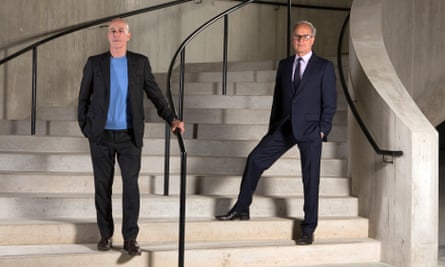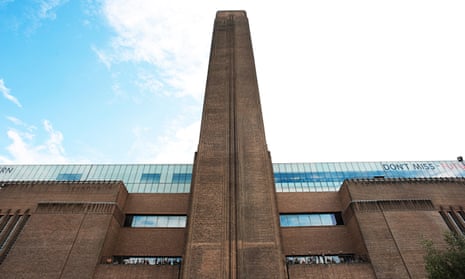‘It is totally unimaginable now,” says Jacques Herzog, “but this was a huge chunk of the city that was completely excluded from public life, overgrown and set back behind high walls. It felt like Sleeping Beauty’s castle.”
The Swiss architect is referring to Bankside power station, the great brick hulk that he and Pierre de Meuron transformed into Tate Modern in the year 2000, turning it into a cathedral of art that is now officially the most popular attraction in the UK, receiving 5.9 million visitors last year. People don’t just come for the art, but to experience the most powerful architectural transformation of the century, and one of the most majestic indoor public spaces in the world.
“It’s not so easy to deal with existing structures, not to destroy them and not to respect them too much,” says Herzog, whose small, then-unknown practice was selected in the 1994 competition precisely because it proposed to do the least to Giles Gilbert Scott’s power station. “Some critics asked why we didn’t leave some turbines, but we had to reduce it some way. By removing the ground floor and digging everything out, we tried to amplify the awesome power of the existing space.”
Twenty years on, the project is no less powerful. In fact, it seems eerily ahead of its time. The turn of the millennium was a time when “iconic” architecture was in its overblown prime, every city desperate for a piece of the “Bilbao effect”, following Frank Gehry’s thrashing titanium fish for the Guggenheim Museum. To take what seemed like a gloomy 1950s brick shed and strip it out, adding a bare minimum of new elements in raw concrete, glass and steel, was a deeply strange thing to do. Tate duly received flak from the architectural establishment for its reticence, accused of lacking the confidence to commission a more flamboyant new building.
“It was incredible foresight from Nick [Serota, former Tate director] to think of using this building. He had seen artists working in industrial spaces in London and New York, but to turn it into a gallery was new,” says Herzog. “We knew we had to keep it raw. We didn’t want to go for glamour, or add decorative elements or formal details. We learned from arte povera that poor materials and ugliness are powerful aesthetic elements.”
The “as found” aesthetic seems so familiar now, but at the beginning of the century, this carefully judged bricolage of rough and smooth, combining the mighty mineral heft of industrial materials with precise surgical incisions into the existing fabric, was something new for London. And not without its difficulties to achieve.

“Construction in England is…” Herzog pauses. “Let’s say, less careful. It would have been impossible if Nick hadn’t been so insistent on the Swiss quality of building. Even though it’s a rough building, it needed some precision and care, particularly with the elements you touch, like the handrails.”
Herzog & de Meuron has cemented its position as probably the most sought-after architecture practice in the world, consistently reinventing its approach for each new building, be it a stadium, opera house or the little roadside chapel currently keeping Herzog busy. But Tate Modern remains its defining work.
“It is the key project of our company,” he says. “It always returns, when I’m talking about programming a space without a given programme, or involving the public, or reusing existing structures, or how to discover spaces that are somewhere between spooky, mysterious and beautiful. You can’t invent that. There is a lot of beauty in the world that we have to appreciate before we transform it.”
